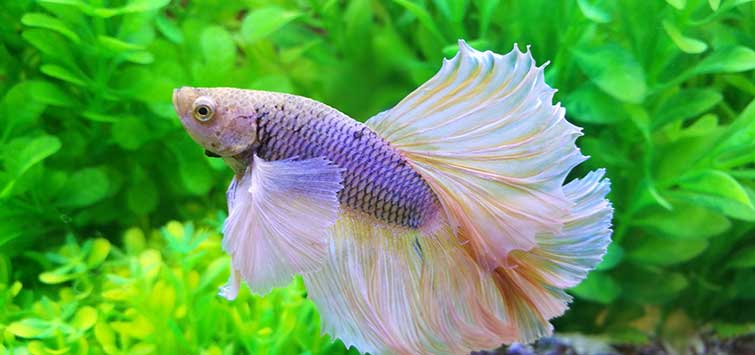Just How to Reproduce Betta Fish Efficiently: Expert Methods and Insights for Hobbyists Wanting To Expand Their Betta Collection
Reproducing Betta fish calls for a nuanced understanding of genetics and ecological conditions, making it necessary for hobbyists to approach the procedure with both persistance and care. Creating an optimum reproduction environment, choosing the best sets, and observing the complexities of their courtship habits are fundamental steps that can substantially impact the outcome.
Recognizing Betta Fish Genes
Understanding the genes of Betta fish is crucial for successful breeding, as it affects traits such as color, fin form, and behavior. Betta fish display a diverse variety of colors and patterns, greatly established by their hereditary makeup. The key genes responsible for coloration consist of the "B" genetics for blue, "D" genetics for red, and the "C" genetics for shade strength. Breeders can control these characteristics by picking specific moms and dad fish that show wanted qualities.
Along with coloration, fin morphology is an additional significant element of Betta genetics (betta fish). The sizes and shape of fins are influenced by various genes, including those that figure out whether the fins are brief, long, or veil-shaped. Comprehending these genetic variants helps dog breeders forecast the phenotypic results of their children
Furthermore, behavioral traits such as aggressiveness and territoriality can likewise be affected by genes. These behaviors play a crucial duty in the reproducing procedure, as they can influence generating success and the total character of the resulting fry. By comprehensively recognizing these genetic principles, dog breeders can make informed decisions, eventually improving their reproduction programs and accomplishing desirable outcomes.
Preparing the Reproduction Atmosphere
Developing an ideal reproduction environment is vital for the successful reproduction of Betta fish. The first action in preparing this environment is to pick a suitable reproduction container, ideally ranging from 5 to 10 gallons.
Following, consider the usage of a sponge filter or an air stone to provide gentle water blood circulation without producing strong currents that can emphasize the fish. It is essential to install plants or breeding cones to provide concealing places and promote comfort for the female during the spawning process. Drifting plants, such as Java moss or water sprite, can also produce an extra all-natural setting while helping with bubble nest structure by the male.
Prior to introducing the breeding pairs, make sure the water is conditioned and devoid of unsafe chemicals, such as chlorine or hefty steels. betta fish. Routine water modifications must be conducted to preserve ideal water quality, boosting the possibilities of successful breeding. With these prep work in position, the breeding environment will sustain the health and wellness and wellness of both Betta fish
Picking Reproduction Pairs
Picking the appropriate breeding sets is vital for accomplishing effective Betta fish reproduction. Healthy find out here now and balanced Betta fish show his comment is here lively colors, clear eyes, and active actions.
Temperament is an additional important consideration, as Betta fish are recognized for their hostile nature. It is recommended to select a male and female that show suitable temperaments to minimize stress throughout the breeding process. A tranquil man can encourage a smoother courtship, while a female that is too hostile might disrupt the process.
Genetic background additionally plays a significant function in the high quality of the offspring. Reproducing fish that are genetically varied can reduce the threat of hereditary health issues and enhance the general vitality of the fry. It is useful to investigate the family tree of both the male and female, concentrating on desirable characteristics such as fin kind, color patterns, and dimension.
The Reproduction Process
The breeding procedure of Betta fish needs mindful preparation and focus to information to ensure an effective end result. It is vital to prepare an ideal reproduction tank, ideally a 5-10 gallon fish tank with a temperature level kept at 78-80 ° F. The tank must be equipped with a heater, filter (ideally sponge type to avoid solid currents), and a lot of marine plants for the lady to hide.
Once the atmosphere is established, introduce the selected reproducing set to the container, enabling them to accommodate. Observe their habits; the man will certainly present elaborate courtship routines, including flaring his fins and constructing a bubble nest. If the female reveals passion, she will show upright stripes suggesting readiness for spawning.
When the woman is responsive, the pair will certainly involve in a breeding embrace, throughout which the male feeds the eggs. Maintaining optimal water conditions during this period is crucial for the advancement see here now of healthy Betta fry.
Taking Care Of Betta Fry

Feeding Betta fry is crucial, as they require a diet high in healthy protein. At first, they can be fed infusoria or fluid fry food, transitioning to carefully crushed top quality pellets as they grow. Feed small portions several times a day to encourage healthy development without straining the storage tank with leftover food.

As they develop, monitor their development carefully and divide any kind of hostile individuals to stop harm. By supplying a supporting setting and correct nourishment, enthusiasts can successfully elevate Betta fry right into lively, healthy and balanced fish, inevitably boosting their breeding ventures.
Conclusion
Successful Betta fish reproduction needs meticulous focus to hereditary option, environmental conditions, and take care of the fry. By understanding the genetics of Betta fish and preparing a proper breeding atmosphere, hobbyists can enhance the opportunities of generating lively, healthy and balanced offspring. Selecting suitable reproduction sets and very closely keeping track of the courtship and spawning processes are necessary. Giving ideal care for the fry guarantees their healthy growth, contributing to a successful Betta collection.